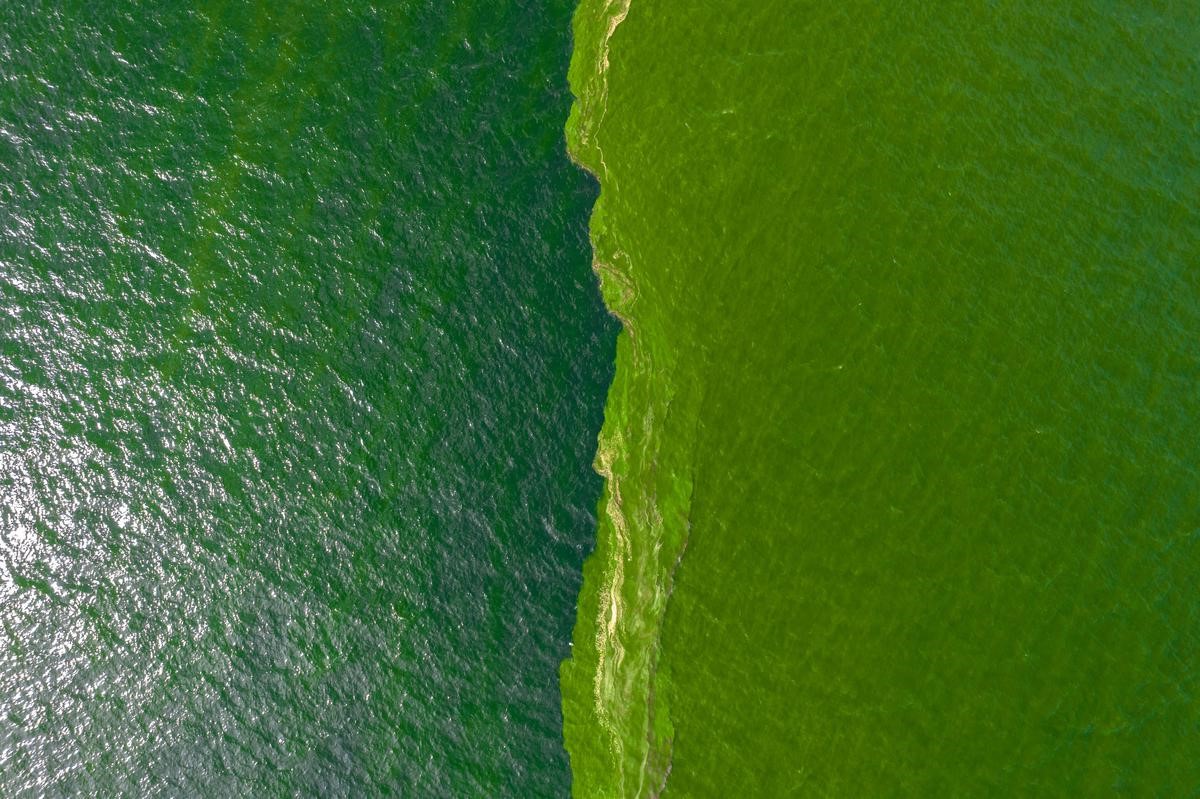Description

Disclaimer: Copyright infringement not intended.
Context
- An unusually dense plankton bloom off the eastern coast of Thailand is creating an aquatic "dead zone".
Details
- Marine scientists say some areas in the Gulf of Thailand have more than 10 times the normal amount of plankton, turning the water a bright green and killing off marine life.
- This is also threatening the livelihood of local fishermen who farm mussels in the waters.
Phytoplankton
- Phytoplankton are microscopic, unicellular, filamentous, or colonial, photosynthetic microalgae or cyanobacteria that live in water.
Phytoplankton Bloom
- A phytoplankton bloom is the development of a level of phytoplankton biomass that is uncharacteristically high for a given water body. Often, but not always, blooms are formed by a single species.
- For a phytoplankton bloom to occur, the net growth rate of a population must be positive for enough time to build a high biomass level.

Consequences of Phytoplankton Blooms
- Phytoplankton blooms threaten the health of aquatic organisms and the health of humans, pets, or livestock that use affected waters for drinking or recreation. High concentrations of phytoplankton during bloom conditions color and clouds the water limiting the transmission of light in the water column.
- In shallow systems, light levels along the bottom may become insufficient to support beneficial submerged aquatic vegetation (SAV) that provide habitat, remove nutrients from the water column, and stabilize bottom sediments.
- Once the SAV is gone, suspension of destabilized sediments causes an increase in turbidity, which in turn often prevents the SAV from returning. The nutrients that were previously consumed by SAV, are consumed by phytoplankton instead, further perpetuating blooms. These feedback mechanisms can trap a water body in this undesirable alternative stable state.
- Of all the negative impacts of phytoplankton blooms, production of toxins by some bloom-forming species represents the most direct threat to human health.
- Cyanobacteria and dinoflagellates are the most common toxin-producing group of phytoplankton in fresh and marine waters, respectively. Cyanobacteria produce a wide variety of cyanotoxins including hepatotoxic (liver-damaging) microcystins, nodularins, and cylindrospermopsins, neurotoxic (nerve-damaging) saxitoxins and anatoxins, and dermatoxic (skin-damaging) lyngbya toxins.
- Ingestion of toxins in drinking water and contact during recreational activities are the two most common exposure pathways to humans, pets and livestock.
- The neurotoxin saxitoxin can bioaccumulate in shellfish and cause paralytic shellfish poisoning in humans or other shellfish-eating animals.
- Red tide dinoflagellate blooms of the genus Karenia produce brevetoxins that kill fish and other marine life and, when aerosolized by wave action, can cause respiratory irritation in humans.
- Habitat loss is another potential consequence of phytoplankton blooms. Although phytoplankton photosynthesis produces oxygen, the decomposition of the dead phytoplankton organic matter can deplete dissolved oxygen in the water to levels too low for fish and other animals. The result is restricted habitat availability due to these dead zones and occasionally mass mortality events (i.e., fish kills).
Bloom Mitigation Strategies
Reduce External Nutrient Loading.
- The first step in designing nutrient controls is determining what nutrient(s) limit phytoplankton growth. Nitrogen (N) and phosphorus (P) have been commonly assumed to be the limiting nutrients for fresh and marine waters, respectively.
- However, recent studies have shown that the limiting nutrient can change seasonally.
- Once the limiting nutrients have been identified, nutrient reduction targets are generally formulated using models that relate nutrient loads to phytoplankton biomass.
- These models may be experimental models with natural water containing the natural phytoplankton communities, simple nutrient budget-based models, or mechanistic, coupled circulation/water quality models.
- Mechanistic circulation/water quality models are the primary means of designing mitigation options for large water bodies. Enacting watershed-based controls on nutrient sources is the best strategy for large water bodies.
Water Column Mixing
- Artificial vertical mixing can reduce the intensity of cyanobacteria blooms through two mechanisms.
- First, mixing oxygenated surface waters downward reduces sediment loading of N and P which results when sediments become anoxic.
- Second, vigorous vertical mixing negates the floating ability of cyanobacteria which leads to lower light availability and minimizes the competitive advantage buoyant taxa have over more desirable, negatively buoyant taxa (e.g. green algae and diatoms).
- Energy requirements to produce sufficiently vigorous mixing are high, and attempts to mix large water bodies with low powered mixers have been unsuccessful. For large water bodies, nutrient control and, where possible, prevention of long residence time conditions are the most feasible, long-term solutions to bloom problems.
Legacy Nutrient Removal
- Organic-rich sediments that result from decades of nutrient over-enrichment can continue to provide high internal nutrient loads that fuel blooms even after external sources of N and P have been reduced.
- Application of alum or modified clay has been used successfully in small to medium-sized freshwater bodies to flocculate P and phytoplankton cells out of the water column.
- Once the clay has settled, it can form a cap on the sediments to prevent P from diffusing back to the water column during anoxic periods.
- Physical removal of organic-rich surficial sediments by dredging has also been used effectively but the high cost of both clay application and dredging largely restricts these practices to small water bodies.
- Nutrients in a water body can also be intercepted and removed by intentionally growing and harvesting macroalgae in a relatively new process called algal turf scrubbing.
.jpg)
Biological and Chemical Control
- For some water bodies, blooms can be managed by manipulating the food web (e.g. removing certain fishes) to increase the numbers of zooplankton grazers. As a very short-term fix, algaecides can be used to control phytoplankton blooms.
- Copper-based algaecides can effectively kill most phytoplankton groups, and algaecides containing hydrogen peroxide can be equally effective on cyanobacteria, without potential unintended toxic effects on higher trophic levels.
- High costs of algaecide also largely restrict its use to small water bodies.
|
PRACTICE QUESTION
Q. Which of the following methods can be used to mitigate Phytoplankton/ Algal Blooms?
1. Water Column Mixing
2. Legacy Nutrient Removal
3. Manipulating the Food Web
4. External Nutrient Loading Reduction
How many of the above are correct?
A) Only 1
B) Only 2
C) Only 3
D) All are correct.
Answer: D) All are correct.
|















